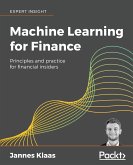Portfolio optimization is a widely studied problem in finance dating back to the work of Merton from the 1960s. While many approaches rely on dynamic programming, some recent contributions use martingale techniques to determine the optimal portfolio allocation. Using the latter approach, we follow a journal article from 2003 and show how optimal portfolio weights can be represented in terms of conditional expectations of the state variables and their Malliavin derivatives. In contrast to other approaches, where Monte Carlo methods are used to compute the weights, here the simulation is carried out using Quasi-Monte Carlo methods in order to improve the efficiency. Despite some previous work on Quasi-Monte Carlo simulation of stochastic differential equations, we find them to dominate plain Monte Carlo methods. However, the theoretical optimal order of convergence is not achieved. With the help of some recent results concerning Monte-Carlo error estimation and backed by some computer experiments on a simple model with explicit solution, we provide a first guess, what could be a way around this difficulties. The book is organized as follows. In the first chapter we provide some general introduction to Quasi-Monte Carlo methods and show at hand of a simple example how these methods can be used to accelerate the plain Monte Carlo sampling approach. In the second part we provide a thourough introduction to Malliavin Calculus and derive some important calculation rules that will be necessary in the third chapter. Right there we will focus on portfolio optimization and and follow a recent journal article of Detemple, Garcia and Rindisbacher from there rather general market model to the optimal portfolio formula. Finally, in the last part we will implement this optimal portfolio by means of a simple model with explicit solution where we find that also their the Quasi-Monte Carlo approach dominates the Monte Carlo method in terms of efficiency and accuracy.








